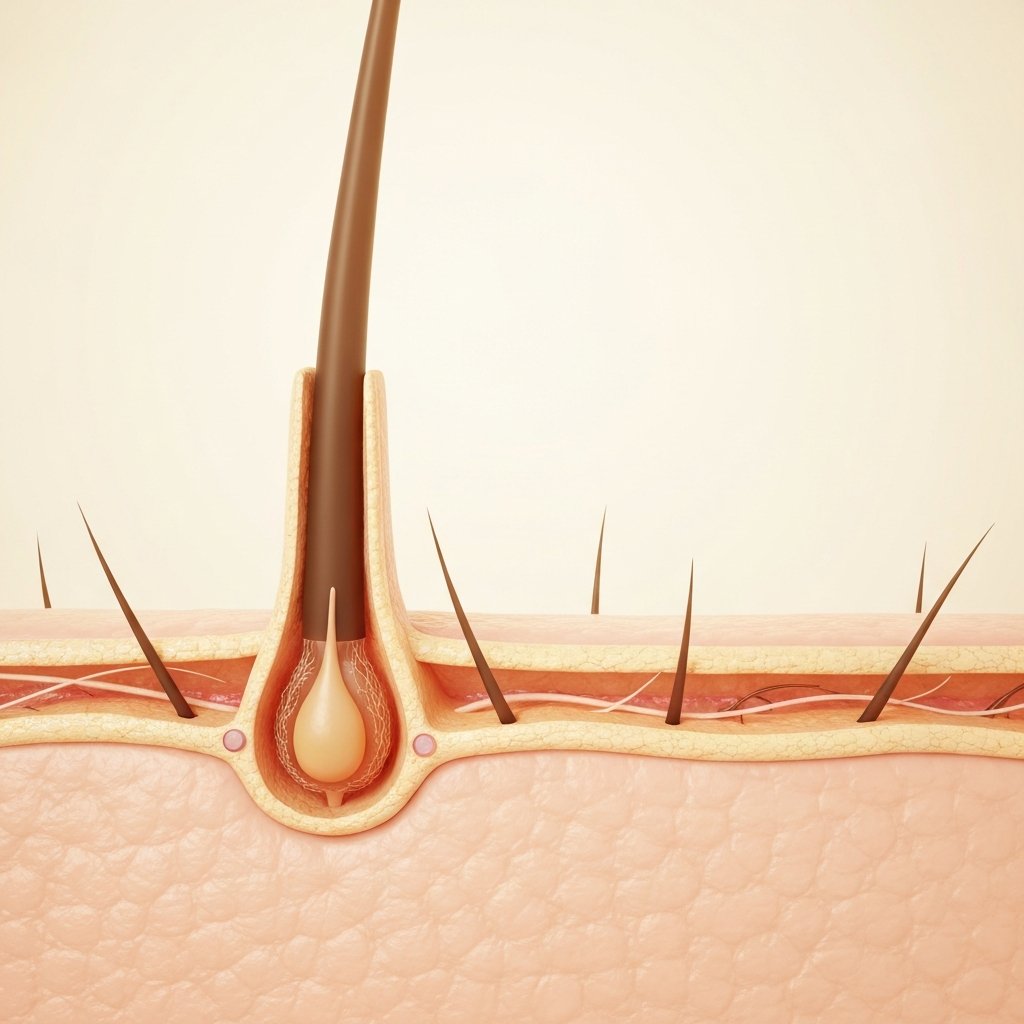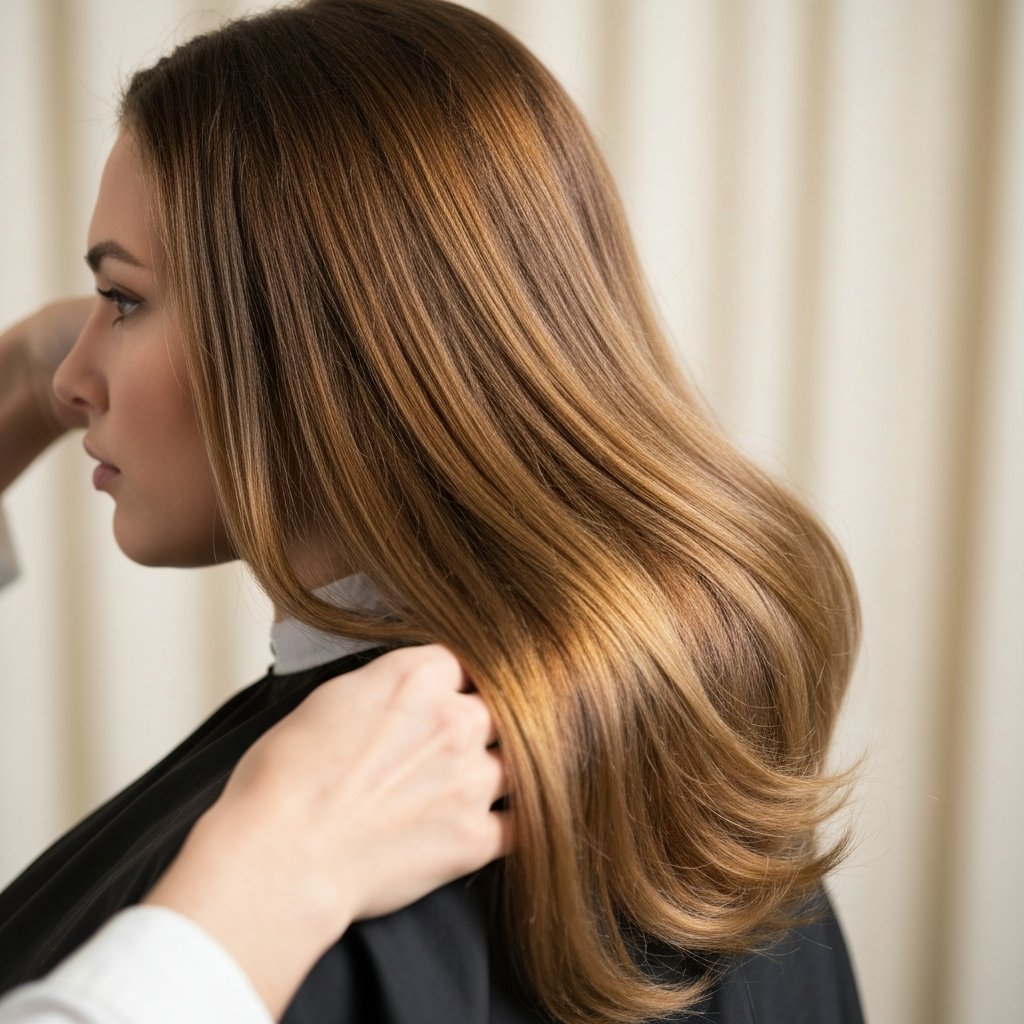
How to Make Fine Hair Look Thicker: Expert Styling Tricks & Product Guide
11 min read

11 min read

11 min read

9 min read

14 min read

11 min read

12 min read
Have you ever wondered why your hair seems to grow rapidly during certain months, only to stall or shed unexpectedly at other times? Or perhaps you have noticed that your bangs seem to grow out overnight, while the length of your hair remains stagnant. The answer lies not in magic or luck, but in the complex, biological clockwork known as the hair growth cycle. Understanding the science of hair growth cycles is the first step toward achieving the luscious, healthy mane many desire. By comprehending the biology behind the strands, individuals can make better decisions regarding care, products, and styling habits.
Every single hair on the human body—from the scalp to the eyebrows—operates independently according to a specific cycle. This asynchronous growth is a biological marvel; if all hair follicles were synchronized, humans would molt all their hair at once, much like certain animals shed their winter coats. Instead, the scalp maintains a continuous balance of growth, transition, resting, and shedding. This blog post delves deep into the microscopic world of the follicle to demystify the process, helping you understand what is normal, what is not, and how to support your hair through every season of its life.
Before understanding the movement of the cycle, one must understand the machinery. The hair follicle is a dynamic organ found in the dermal layer of the skin. It is the manufacturing plant for hair fibers. At the base of the follicle lies the hair bulb, which houses the dermal papilla. The papilla is rich in blood vessels that supply the necessary nutrients and oxygen to the dividing cells. Without this vital blood supply, hair cannot grow.

Surrounding the papilla is the matrix, a collection of cells that are among the fastest-dividing in the human body. As these cells multiply, they are pushed upward, hardening and undergoing a process called keratinization. This is where the hair shaft—the visible part of the hair—is formed. Interestingly, the hair you see and style is technically dead tissue made of keratin protein; the "living" part of the hair exists entirely below the surface of the scalp. This distinction is crucial because it explains why you cannot "heal" damaged ends, but you can improve the quality of new growth by focusing on the follicle.
Sebaceous glands are also attached to the follicle. These glands produce sebum, a natural oil that conditions the hair and scalp. The health of the follicle, the efficiency of the matrix, and the balance of sebum production all play roles in how effectively the hair moves through its growth cycles. When the anatomy functions correctly, the cycle proceeds smoothly. When disrupted by inflammation, poor nutrition, or hormonal imbalances, the machinery can stall.
The Anagen phase is the main event in the life of a hair strand. This is the active growth period where the cells in the root of the hair are dividing rapidly, adding to the hair shaft. For the hair on the scalp, the Anagen phase is remarkably long, typically lasting anywhere from two to seven years. This duration is genetically determined and is the primary reason why some people can grow hair down to their waist while others struggle to get it past their shoulders.

During Anagen, the hair follicle is buried deep within the dermis of the skin to get nourishment from the blood supply. The hair grows approximately one centimeter every 28 days. At any given time, about 85% to 90% of the hair on a healthy scalp is in this active phase. This dominance of the Anagen phase ensures that the head remains fully covered with hair despite the constant shedding that occurs daily.
It is important to note that the length of the Anagen phase decreases as people age. Furthermore, external factors such as extreme stress or illness can prematurely shorten this phase, forcing the hair into the shedding phases too early. This biological mechanism is why maintaining systemic health is often the best way to ensure long, flowing locks. Professional salons often recommend scalp treatments designed to stimulate blood flow, thereby supporting the follicle during this critical marathon of growth.
Following the long marathon of the Anagen phase comes a brief intermission known as the Catagen phase. This transitional stage is relatively short, lasting only about two to three weeks. Despite its brevity, it is a complex physiological process where vital structural changes occur within the follicle.

During Catagen, the hair stops growing. The outer root sheath shrinks and attaches to the root of the hair. Crucially, the hair follicle detaches from the blood supply (the dermal papilla) and moves upward toward the surface of the scalp. This creates what is known as a "club hair." If you have ever pulled out a hair and noticed a small, white, hard bulb at the end, you are looking at a club hair that has gone through the Catagen phase.
At any given moment, only about 1% of the hair on the scalp is in the Catagen phase. It represents a signal to the body that the active production period is over and it is time to prepare for renewal. While no visible growth happens here, the health of the scalp during this phase is vital to prepare the follicle for its eventual return to the Anagen phase later in the cycle.
Once the hair has detached from its blood supply, it enters the Telogen phase, also known as the resting phase. During this period, the hair follicle is completely at rest. The club hair sits dormant in the follicle while the machinery deep in the scalp begins to reset. This phase typically lasts for about three months.

While the old hair is resting, the body is not entirely idle. Beneath the surface, the follicle begins to regenerate. New stem cells are activated to create a new hair germ, which will eventually become the new Anagen hair. Approximately 10% to 15% of scalp hair is in the Telogen phase at any one time.
Many people panic when they hear about "resting" hair, fearing that it means their hair is dying. However, the Telogen phase is a necessary part of the biological battery recharge. Without this rest, the follicle could not sustain the energy required for the next multi-year growth spurt. Issues arise only when a disproportionate number of follicles are pushed into Telogen simultaneously—a condition known as Telogen Effluvium—often triggered by shock, high fever, or severe stress.
Historically, the Exogen phase was considered part of Telogen, but modern science now classifies it as a distinct stage. Exogen is the shedding phase. This is the point where the resting club hair is finally released from the scalp and falls out. This usually happens when the new hair, growing up from beneath during the early return to Anagen, pushes the old hair out.

It is perfectly normal to lose between 50 and 100 hairs every single day during the Exogen phase. This shedding is most noticeable when washing hair or brushing it. Seeing hair in the shower drain can be alarming, but it is usually just the natural conclusion of a cycle that began years ago.
Exogen is the scalp's way of "taking out the trash" to make room for fresh, healthy growth. If the old, weathered hair did not shed, there would be no room for the new, healthy hair to emerge. However, if shedding exceeds the normal 100-hair daily average significantly, it may warrant a consultation with a trichologist or a dermatologist to rule out underlying issues.
While the hair growth cycle is a robust biological program, it is sensitive to internal and external disruptions. Understanding these factors can help in mitigating hair loss and promoting longevity in the Anagen phase.

Hormonal Fluctuations: Hormones are the master regulators of the hair growth cycle. Androgens, specifically dihydrotestosterone (DHT), can cause follicles to shrink and shorten the Anagen phase, leading to thinner, shorter hair—a process common in pattern baldness. Conversely, estrogen generally prolongs the growth phase, which is why many pregnant women experience thick, luscious hair, only to experience significant shedding (postpartum shedding) once estrogen levels drop after birth.
Nutritional Deficiencies: The hair follicle is a non-essential organ in terms of survival. If the body is deprived of nutrients, it will divert resources to vital organs like the heart and brain, leaving hair to starve. Deficiencies in iron, Vitamin D, B12, and protein can force hair into the Telogen phase prematurely. A balanced diet is, therefore, a non-negotiable aspect of hair care.
Chronic Stress: High levels of cortisol, the stress hormone, can disrupt the signaling in the hair follicle. Stress can essentially "shock" the hair cycle, pushing up to 70% of hairs into the resting phase at once. This usually manifests as hair loss occurring months after the stressful event, making it difficult for individuals to connect the cause and effect.
While genetics dictate the maximum length of the Anagen phase, lifestyle choices can help you reach that potential. Here are professional recommendations for maintaining cycle harmony:


The science of hair growth cycles is a reminder that our hair is a living, responsive part of our biology. It is not merely an accessory but a reflection of our internal health and genetic makeup. By understanding the rhythm of Anagen, Catagen, Telogen, and Exogen, we can stop fighting against our hair and start working with it.
Patience is key. Hair growth is a long game that requires consistency in care, nutrition, and maintenance. Whether you are trying to grow out a bob or managing postpartum shedding, remember that your follicles are constantly working in a cycle of renewal. For personalized advice on how to manage your specific hair texture and health, visiting a professional salon for a consultation is always the best next step. Professional stylists can assess the condition of the hair shaft and scalp, recommending a regimen that honors the science of your hair.